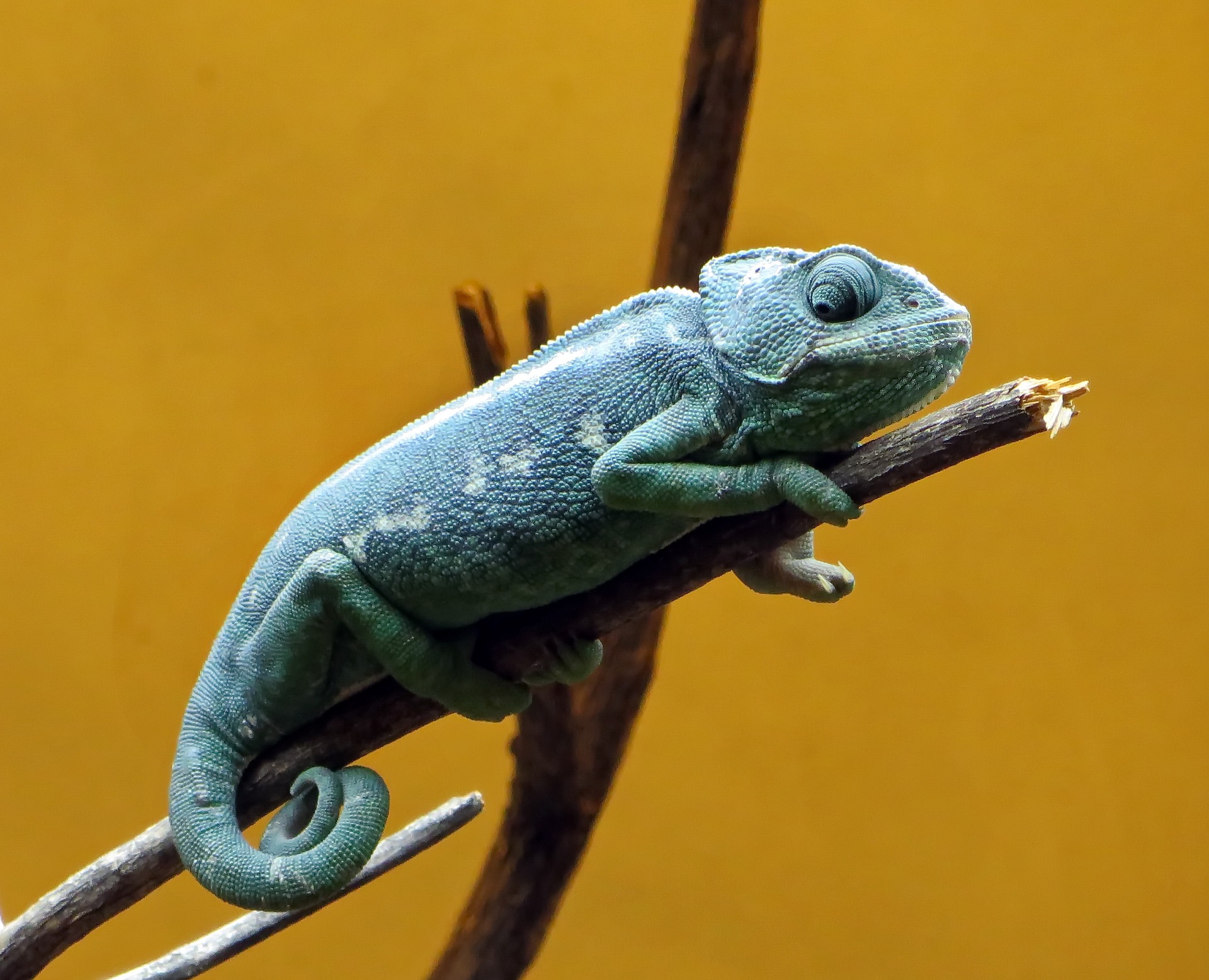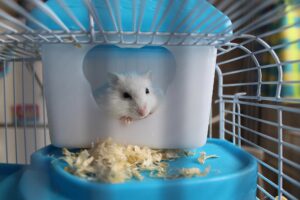In today’s post, we’re going to delving into the world of vivariums. As you can probably tell from the title, we’re going to be reviewing the Vivexotic vivarium; however, as we know that some of you reading this may be entirely new to vivariums, we’ve decided to include a succinct guide to setting up a vivarium, what you’ll need, and other tidbits of information that will help you on your way. However, if you know how to set up a vivarium, feel free to scroll down to the review!
Setting Up Your Vivexotic Vivarium
In this section, we’re going to look at how to set up your Vivexotic vivarium, focussing on the following topics:
- A brief introduction to vivariums.
- Having the right mindset & understanding your reptiles needs.
- Heating your vivarium.
- Lighting your vivarium (and why you need UVB light source).
- Substrates and Decor
#1 – What is a Vivarium?
I’m sure the vast majority of people reading this will know what a vivarium is, but for those who don’t, here’s a little recap.
Vivariums are typically made from wood with glass sliding panels on the front to allow access. Wood is regarded as the best choice as it is a superb insulator meaning it will hold heat in rather than allowing it to escape; however, plastic vivariums are also just as capable of doing so – so either is a good choice.
To create an ideal environment for your reptile, your vivarium will generally need a form of substrate (loose or fitted), live plants and/or decorations, and equipment such as bulbs, heat lamps, a thermostat/thermometer to ensure the environment is easily controllable and suitable for your pets needs.
#2 – Having The Right Mindset & Understanding Your Reptile’s Needs
Ok, the phrase ‘having the right mindset’ might seem a little over the top, but we can’t stress enough just how critical creating the perfect environment for your reptile is; doing so will help your pet live a long, happy and healthy life.
It’s absolutely essential that you do everything you can to build them their own little haven where they eat, sleep, relax, stay stress-free, and enjoy each and every day of their lives.
The aim of a vivarium (or any other form of reptile ‘home’) is to recreate the animal’s natural environment as best as you possibly can, which is why the use of a vivarium (or terrarium) is always advised as this will allow you to do this. And, as you’re probably aware, before buying a vivarium, it’s essential to carry out thorough research about your potential reptile or amphibian to see which model or type will allow you to create a suitable environment for them.
#3 – Heating Your Vivarium
To ensure your vivarium has the optimum temperature for your reptile, installing a heat source on one side of the tank is vital. The most commonly used heat sources are heat mats, ceramic bulbs, and incandescent light bulbs. However, it’s essential that your reptile doesn’t come into contact with the heat source, so don’t use heat mats inside the tank and make sure heat bulbs are covered with a heat guard.
To control the heat, a thermostat should be used. This is a critical point and should not be overlooked, as being too cold or too hot can have a disastrous impact on your pet’s health. For this reason, we highly recommend investing in a high-quality thermostat that will give accurate readings. Unfortunately, there are a myriad of cheap thermostats currently on the market, and from testing some of these, we know that they aren’t the most accurate; therefore, opting for a well-renowned brand is the best course of action.
Getting the temperature right will take a little trial and error; however, having a thermometer at both sides of the tank will help you to monitor the temperature and tweak where necessary. Always ensure the thermometer probe isn’t covered by décor or substrate as this will impact the accuracy of the reading.
#4 – Lighting Your Vivarium
The type of lighting you’ll need for your vivarium will depend on which species you’re keeping.
Although there is undoubtedly much debate regarding lighting, it’s generally accepted that Amphibians, Arachnids, Snakes, Leopard Geckos, and Crested Geckos do not require UVB lighting as they’re nocturnal and receive all of their nutrients in one meal (from their prey); however, some also suggest that providing a 2% UVB light/bulb will ensure they not only have a light source but are also able to get additional health benefits from the UVB. At the end of the day, there won’t be any detrimental effects from the light, but whether or not it has any meaningful effect(s) remains to be seen. Ultimately, it’s a personal choice and will depend on your own opinion and budget.
Conversely, animals whose natural habitat is a rainforest, such as Chameleons, Green Iguanas, and Anoles, require lighting with a minimum of 5% UVB output. In contrast, desert-dwelling creatures such Tortoises and Bearded Dragons require 10-12% UVB output.
Why is UVB lighting needed?
Reptiles need UVB lighting as it facilitates the production of vitamin D3, which, in turn, enhances the absorption of calcium. For this reason, we highly recommend covering your reptiles food with a multivitamin and calcium powder. When we say food, we mean all food – including live food!
UVB light bulbs typically need to be changed every six or so months due to the fact that the amount of YVB they produce will decrease over time. If you don’t provide your reptile with sufficient UVB and adequate calcium, you put your reptile at risk of metabolic bone disease, something which will decrease their quality of life and potentially even shorten it.
#5 – Substrates and Decor
Substrates
Substrates are another piece of the vivarium jigsaw, but which you use will depend on your reptile’s natural environment.
Animals that naturally reside in rainforests or rainforest type environments will require a substrate that is wood-based and is able to hold moisture well, for example, Orchid bark.
Animals that are desert dwellers will typically need a sand-based substrate, such as regular sand or calci-sand, as many experts suggest this to be edible and won’t adversely affect them should they consume it.
Amphibians generally require a moist substrate such as peat, sphagnum moss, or coco fibre.
Terrapins and turtles commonly require a water-based environment with a couple of dry areas and/or floating rafts to allow them to bask under the heat source.
Snakes reside in most warm climates around the globe; therefore, it’s important to find out which type of environment would be their natural ‘home’ and chose a substrate accordingly. For example, corn snakes will get along fine with a standard bark substrate, whereas Garter snakes would need either coco fibre or orchid bark.
Substrates should be replaced every four to six weeks.
Decor
The decor is often the last thing people think of when putting together their vivarium, but that doesn’t mean it isn’t important. In fact, it plays an essential role in your reptiles health and well being, as well as making your vivarium look pleasing to the eye.
Both the warm and cool ends of your vivarium should provide lots of cover to ensure your pet can feel safe and secure at all times. If your reptile lacks adequate hiding spots, it can quickly become stressed, which will, of course, have an adverse impact on their health – for example, they may refuse food.
Crested Geckos and Chameleons (and other Arboreal creatures) spend much of their time climbing trees in their natural habitat, so it’s important to recreate this as best as possible by densely packing tree-like décor, live plants or plastic plants into one area of your vivarium. By doing so, you will not only make them feel like they’re in a natural environment, but you’ll also help to keep the vivarium moist.
If your reptile is a desert dweller, we recommend using cacti and succulents. However, it is crucial to carry out complete research into which plants and décor are suitable for your animals before it becomes their new home.
Vivexotic Vivarium: Our Review
When reviewing vivariums, we take into consideration several critical factors, all of which are things that you, the buyer, need to know before you hand over your cash. We leave no stone unturned to ensure that you gain as much knowledge a) about the product and b) its suitability before you make a purchase. The factors we shall explore in today’s review will be:
- Assembly: Is it easy to put together?
- Design and construction: Is it well built? Will it last?
- Quality: Is it made from quality materials? Is it suitable for reptiles and amphibians?
- Price: Is it cost-effective? How does it compare to other vivariums on the market?
- Things we don’t like: Is there anything we’d change?
With all of the above knowledge ‘in your locker’, you’ll be able to make an informed purchase. After all, the last thing we want is for you to rush into a purchase and make the wrong choice, which is why we take our time to examine and review products to save you from making costly mistakes.
So, without further ado, let’s see whether or not Vivexotic vivariums cut the mustard.
Vivexotic Vivarium Review: Is it worth your hard-earned money?
Colours: Black, Oak.
Sizes: Small (57.5cm L x 37.5cm D x 42.1cm H); Medium (86.2cm L x 37.5 D x 42.1cm H); Large (115cm L x 37.5cm D x 42.1cm H)
Getting the right vivarium is crucial for your pets happiness, health, and longevity; therefore, opting for a renowned brand that offers high-quality products is a must. Straight off the bat, it’s clear that Vivexotic is a brand held in high esteem by thousands of customers around the globe, which is always good to see. Unfortunately, there are quite a few low-quality brands doing the rounds at present, which is making it far easier for consumers like yourself to fall into the trap of buying below par products. Luckily for you, we know a thing or two about vivariums and can categorically state that Vivexotic is a reliable brand.
Assembly
There’s nothing as frustrating as getting your hands on a new purchase and then finding putting it together absolutely infuriating! The amounts of time I’ve purchased a desk, a cupboard, a wardrobe or something of that ilk and found that put it together took far too long and sent my stress levels through the roof is bordering on ridiculous!
Luckily, vivariums are typically small and involve fewer pieces than the aforementioned pieces of furniture, but that doesn’t mean they can’t be just as frustrating.
But how does Vivexotic fare?
Well, we actually found it very straightforward to put together our vivarium. Granted, it’s not exactly like building a model ship from matchsticks, but all products that come in flat-pack form and require assembly have the potential to cause issues. Thankfully, this didn’t, so it gets a big thumbs up from us on this front. Plus, it took less than 20 minutes to do, which is really rather quick.
Design & Construction
Once we had it put together, it was time to answer the following questions: Is it well built? Will it last?
Now, answering these questions fully – particularly the latter question – is not something we do 100& comprehensively after having the vivarium for around a month or so. However, that doesn’t mean that we can’t discuss its construction and whether or we think it is sturdy enough to last many years. It’s pretty easy to tell how well made something is just by merely putting it together and using it for a short while.
Upon immediate inspection, it feels like a solid vivarium, one that won’t fall apart or get damaged easily and one that could have things stored on top of it. Of course, we’d never suggest piling heavy things on top of something that houses any animal, but a few things here and there would be absolutely fine.
Quality
The three most integral parts of a vivarium are its ability to maintain the right environment, allow easy access to your pet and stop anything untoward happening, i.e. your reptile escaping.
Having used the vivarium for just over a month, it’s definitely capable of maintaining the environment we want. It retains heat well, and our lizard is just as happy as he ever has been! Furthermore, the glass is solid, and it requires a little force to open the sliding doors, so there’s no way he’ll be able to escape.
Price: The current pricing on Amazon is as follows:
Small (57.5cm L x 37.5cm D x 42.1cm H): £61.99
Medium (86.2cm L x 37.5 D x 42.1cm H): £88.82
Large (115cm L x 37.5cm D x 42.1cm H): £137.99
Based on the average price of similar sized vivariums, the Vivexotic vivariums are very good value for money. There are a few cheaper options available, but as we’ve not reviewed these and are always sceptical of vivariums that seem too cheap, we’d sooner opt for something a little pricier that we’re confident will do the job it’s intended for and last the test of time.
Things we don’t like: Most of those in the know suggest that wood is the best material for a vivarium as it retains heat better than plastic. While we wouldn’t disagree with this, our experience with the Vivexotic shows that a plastic vivarium can be almost as good as a wooden one – and often at a lower price. While we still think that wood is probably the best material, plastic isn’t too far behind.
Our only gripe (which is shared by a few reviewers on Amazon) is the fact it uses plastic plugs rather than proper screws. For extra sturdiness, we do prefer actual screws, but we don’t think it’ll make too much of a difference to the longevity and performance of the vivarium.
Our verdict: We’d give the Vivexotic vivarium a solid 8/10 of ten. It’s well constructed, retains heat well, is a safe and secure home for your reptile/amphibian, and is well priced. In an ideal world, we’d prefer a wood construction and the use of proper screws, but at this price point, we’re more than happy to recommend the product as it is.









